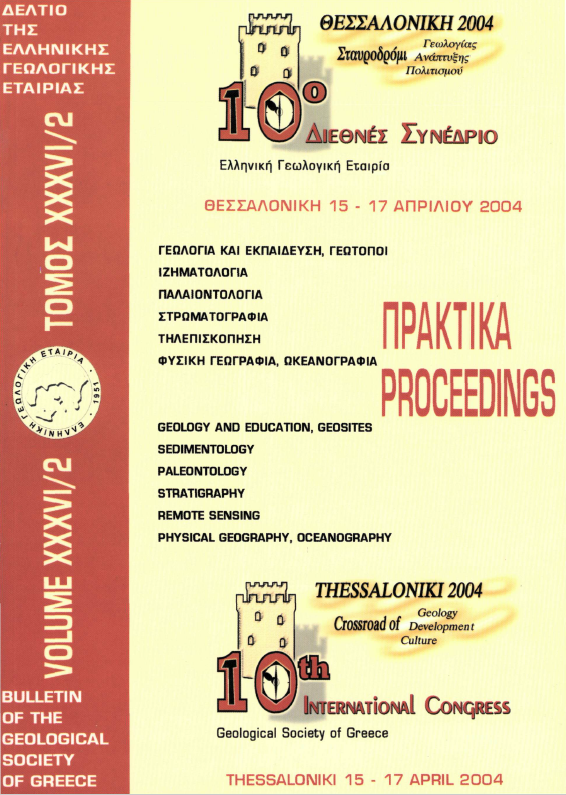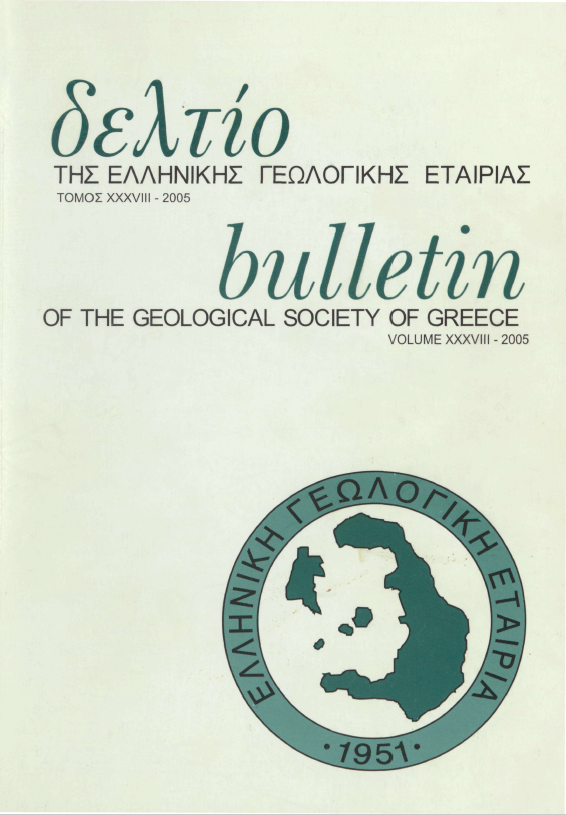PHYSICO-GEOGRAPHICAL OBSERVATIONS OF THE COASTAL ZONE OF THE NORTHEASTERN PART OF ISLAND RHODES
Résumé
Rhodes is the biggest island of the Dodecanese complex; its geology is very interesting for the researchers because it h located onto the eastern end of the Aegean arcade. This paper involves the physico-geographical features of the coastal zone of the NE part of Rhodes. Specifically, the major geological formations of the region were studied and classified, according to their morphology and lithology. In addition, the human interventions that have affected the region were also recorded. The geological formations met in the study region are the following: Mesozoic limestones, Oligocene flysch, Pliocene - Pleistocene marls, calcarenites, and Holocene deposits. Steep slopes and cliffs basically characterize the limestone coasts. Some mirror faults, indicate the intense tectonic movements whereas, some coastlines witness the former sea level. The flysch coasts have mainly steep slope. The coasts, which are developed on marls and calcarenites have got various morphological slopes. This has resulted to the formation of steep costs with cliffs and middle slope costs that are characterized by smooth relief. The coasts developed onto alluvial deposits have mainly gentle slope bearing the bulk of the beaches. They are featured by several geoforms such as coastal dunes, while the human intervention is significant.
Article Details
- Comment citer
-
Βερυκίου-Παπασπυριδάκου Ε., Μπαθρέλλος Γ., & Σκυλοδήμου Χ. (2018). PHYSICO-GEOGRAPHICAL OBSERVATIONS OF THE COASTAL ZONE OF THE NORTHEASTERN PART OF ISLAND RHODES. Bulletin of the Geological Society of Greece, 36(2), 958–967. https://doi.org/10.12681/bgsg.16898
- Rubrique
- Marine Geology and Oceanography

Ce travail est disponible sous licence Creative Commons Attribution - Pas d’Utilisation Commerciale 4.0 International.
Authors who publish with this journal agree to the following terms:
Authors retain copyright and grant the journal right of first publication with the work simultaneously licensed under a Creative Commons Attribution Non-Commercial License that allows others to share the work with an acknowledgement of the work's authorship and initial publication in this journal.
Authors are able to enter into separate, additional contractual arrangements for the non-exclusive distribution of the journal's published version of the work (e.g. post it to an institutional repository or publish it in a book), with an acknowledgement of its initial publication in this journal. Authors are permitted and encouraged to post their work online (preferably in institutional repositories or on their website) prior to and during the submission process, as it can lead to productive exchanges, as well as earlier and greater citation of published work.




